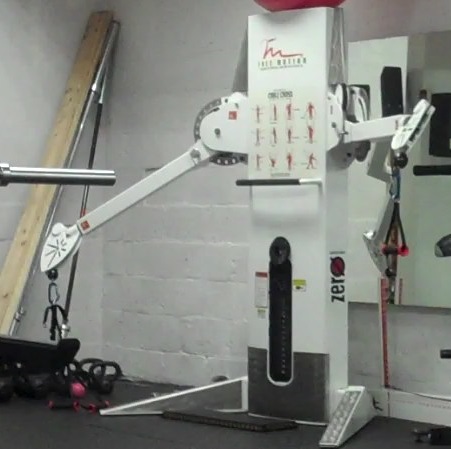This article is the 2nd last entry in my blog-series: My Favourite Training Tools (For my American readers, please excuse the ‘u’ in favourite. It’s a Canadian thing). There are probably thousands of tools out there for fitness. Some are ridiculous fly-by-night items, others have been mainstays for hundreds of years, and now and then there is a new kid on the block that is clearly here to stay. Through this blog-series, I’ll share with you the tools that I think are worth including in your home or commercial gym.
The functional trainer, or cable column, is the only exception to my opinion about machines. For the most part, I think machines for weight lifting are somewhere between a waste of space and money, counter productive, and dangerous. Click the link on the former point to see what I mean about that. I say counterproductive because most exercise machines involve sitting down meaning you lose any bone mineral density building weight bearing benefit (tongue twister?). Oh, and the back or chest rest on the machine also takes the core out of the equation meaning you then have to go to core class after. I say dangerous because most force a fixed plane of movement. Next time you think the smith machine or bench press machine is the same thing as squatting or benching with a bar, take a look at someone squatting or benching with the bar. Is the bar moving completely vertically? Or is it moving slightly outside the perpendicular? It’s moving, and that’s not a sign of bad form; it’s a sign of how your body moves. The machines don’t allow normal human movement, and when you add weight to abnormal movement, I call that dangerous. They’re also often made based on a certain body size, meaning if you’re not that size, you may find yourself overstretched just to get into the start position. That’s not great when you add weight.
That’s why I don’t like machines. But the functional trainer is different. It moves in all directions. And you use it standing, half-kneeling, tall-kneeling, sitting, one leg, split stance, parallel stance; it’s made for short, tall, long arm, short torso, longer left arm than right; I could go on and on.
The functional trainer gets a lot of use at Custom Strength. Most commonly we use it for exercises I classify as upper pulls, upper pushes, and anti-rotation core. Upper pulls tend to be back exercises, like rows, pull ups, and pull downs; upper pushes tend to be chest and arm exercises like bench press and pushups; and anti-rotation core exercises include things like chops and lifts, landmine rotations, and bird dogs. The latter are, in my opinion, the most under-used exercise that every athlete should be doing. Every sport that involves a ball, disc, or puck requires you to be able to stabilize and transfer energy cross-body from your lower to upper and left to right. That is why anti-rotation core training is so important. Keep that strong, and you’re an efficient power machine; let it go and your power output will drop off and the likelihood of back injury increases (if you’re not transferring the energy, you’re absorbing it). This is the biggest benefit of the functional trainer for athletes.
The functional trainer is also incredible for those who have been sedentary for a long time and want to get stronger. I use the functional trainer with all manner of untrained clients, and it’s amazing. Single arm cable rows and presses allows me to get them strong without overstressing them, while also being efficient – while they work their arms, chest and back muscles, they’re also working their core stabilizers. It’s an amazing way to get people started.
It’s also a phenomenal option for anyone who is injured. Have a broken wrist? Presses and rows with the other arm! Sprained ankle, or torn ACL? The half-kneeling position I mentioned above can become half-seated to accommodate you.
There’s a reason the functional trainer is a bottle-neck at our gym: because we use it for at least one exercise in almost every client’s program. If your gym doesn’t have a functional trainer, consider changing gyms to one that does. Or ask the manager to get rid of all the other equipment and get free weights and functional trainers instead. It really is the only exercise machine worth having in the gym. Unless you feel a desire to call a power rack a machine, in which case there are two good machines. And the glute ham developer makes three. But that’s it. Really.
Wondering what my 9 other favourite training tools are? Here’s the list (Click on any of the links to go to the article to find out why):
- Free weights
- Functional trainer (sometimes called a cable column)
- Bands
- Functional Movement Screen
- Suspension trainer
- Chin up bar
- Kettlebells
- Agility ladder
- Foam roll
- Sled
Elsbeth Vaino, CSCS, owns and trains clients out of Custom Strength in Ottawa, Canada.
If you enjoyed this blog post, please share it. Do you have favourite gym tools that didn’t make my list (yet)? Share below, along with your why.

Nice post and thanks for sharing.